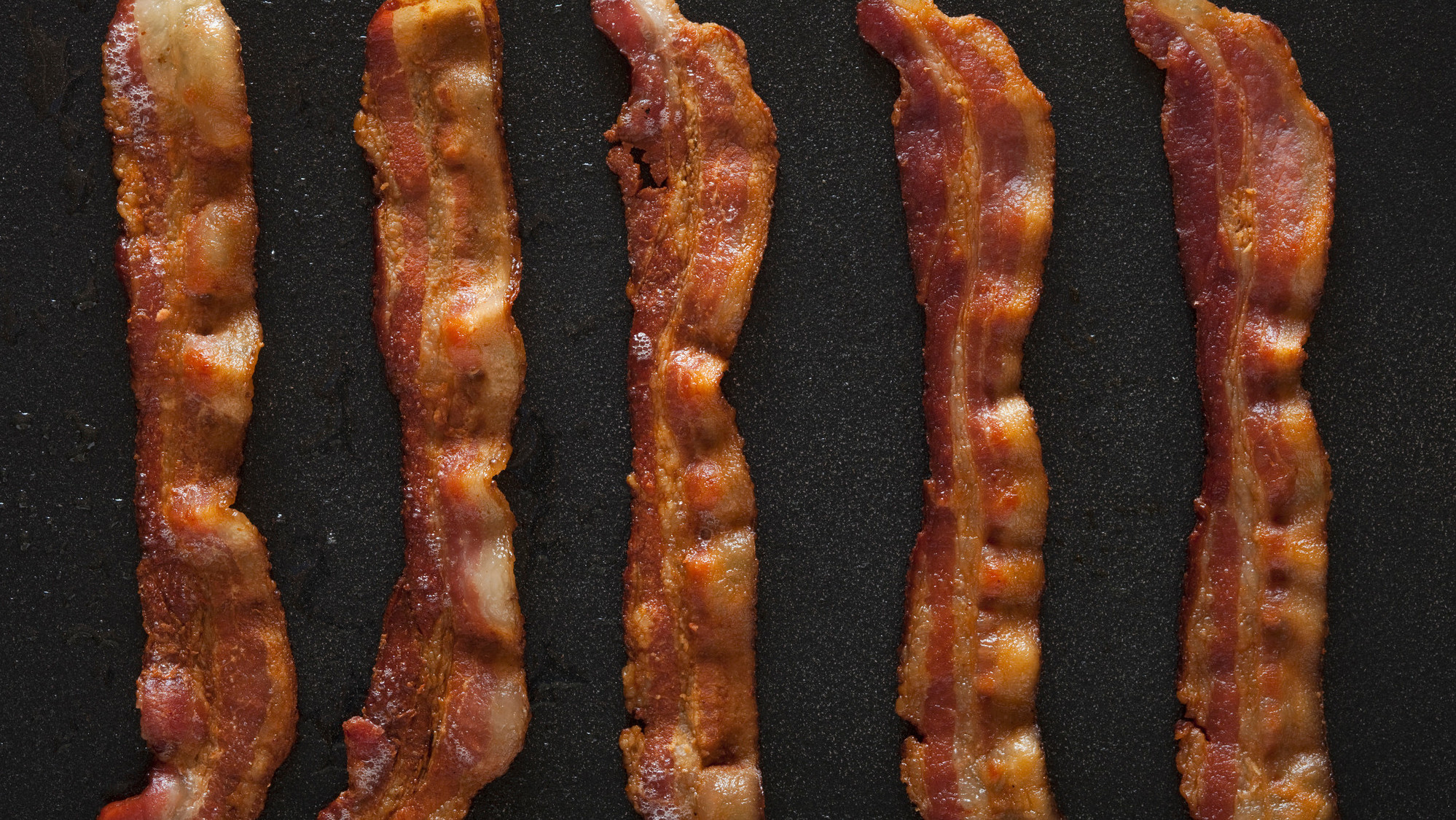Cook Bacon In The Oven For A Seamless, Splatterless Breakfast
In my kitchen I mostly use bacon for cooking; just a little bit imparts a massive amount of flavor to everything from vegetables to cookies. If I got into the habit of making bacon on its own just because, I would end up eating between three and four pounds of bacon a week. Now, I'm not one of those people who believes "everything is better with bacon" (and have gone on the record with my surprisingly controversial beliefs), but if there is a plate of cooked bacon in my house, it is almost impossible to stop myself from picking at it until all that crispy, succulent bacon magically disappears. We know that bacon isn't great for us. We know it should be eaten in moderation. But when bacon abounds, we are helpless to resist it. That's why bacon should be made infrequently—and whenever you make bacon, it should be the best bacon you've ever tasted.
This is why, whenever I give in to my basest desires and make bacon as a snack, I bake it in the oven. As far as I'm concerned, that's the only way to cook it at all. In a frying pan, bacon is wily and uncontrollable. It coils and twists about the pan, resisting any attempt to cook it evenly. As it burns in certain places while remaining flaccid and raw in others, the bacon lashes out, flinging scalding hot fat over everything and everyone with no sense of remorse. When all is said and done, you've got a plate of unevenly cooked bacon, a kitchen spattered with grease, and second-degree burns all over your forearms. I mean, bacon is totally worth all of that, but none of it is necessary when your other option is putting the bacon in the oven, having none of those things happen, and eating a superior final product. Here's how to do it.
Preheat your oven to 425 degrees, then find a roasting or sheet pan that can fit a wire rack on top of it. Cooking the bacon on a rack has two functions: one, it allows the bacon to cook more evenly by surrounding it with hot air, and two, it keeps the bacon from being submerged in its own grease as it cooks.
Next, line the pan with heavy duty aluminum foil, because trying to clean a pan full of baked-on bacon grease is a tedious, awful task. An even better reason to use foil: it makes it much easier to save that rendered bacon fat for another use, which is something you absolutely should be doing if you don't already make a habit of it. More on that later.
Next, place the wire rack on top of the pan and lay the bacon flat across it. If some pieces need to hang off the edge a bit to make everything fit, that's fine. The bacon strips can be put right up against each other, but shouldn't overlap. If you'd like, season the bacon. Bacon comes pre-salted as part of the curing process, but you can still add seasonings like black pepper, spices, or brown sugar. (If you're planning to glaze your bacon with something liquid like barbecue sauce or maple syrup, wait until the bacon is almost fully cooked, only adding the liquids a few minutes before you remove the bacon from the oven.)
Bake in the center of the oven until it's done. Precisely how much time that takes depends on a number of things, like how thick-cut the bacon is, how fatty it is, and how well done you like your bacon. Check it after 10 minutes to see how it looks, then keep an eye on it until it reaches your ideal level of crispiness. Remove from the oven, let it rest for a minute or two, then go off and have as much fun as you want with your tasty, tasty bacon.
And once you're finished, don't tempt fate by trying to pour the leftover bacon fat directly from the pan into a jar. Instead, let the grease cool to room temperature on the pan, then pop that pan full of fat in the fridge or freezer to solidify. After that, you just use a spoon to scoop up the solid bacon fat off the foil, then transfer it to a resealable container to be stored in your fridge or freezer.
